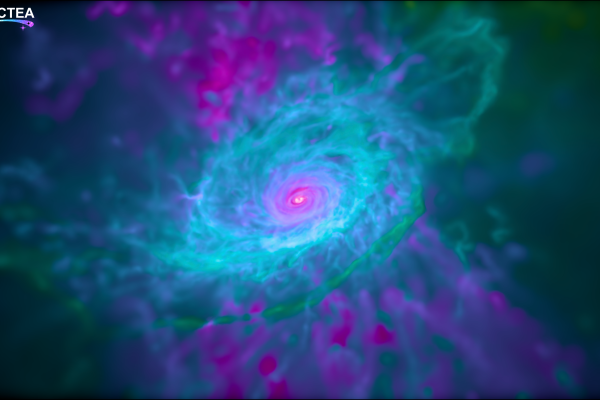The new technique to probe the Universe using its large-scale galaxy distribution
Researchers Samuel Brieden, Héctor Gil-Marín and Licia Verde (ICCUB-IEEC) have designed a new clustering analysis technique named ShapeFit, which presents key advantages over the alternative model-dependent approaches. They reviewed the improvements provided by this new methodology in a paper published today at Physics Review D.
With their new technique, they managed to bring together two very distinct approaches to cosmologically interpret large maps of galaxies. Traditionally, spectroscopic surveys such as BOSS and eBOSS use the statistical properties of their galaxy maps to infer the geometry and structure growth of the universe from a billion years after the Big Bang until today in a model-independent way through the standard ruler technique. This technique uses the galaxy two-point correlation function or its analogue, known as the power spectrum.
This function quantifies the excess probability of finding two pairs of galaxies at a given distance, and encodes the vast majority of the statistical information enclosed in the clustering galaxies, including the signature of a cosmic “standard ruler”.
The length of the standard ruler can then be directly linked to the so-called sound horizon, which is the distance that any perturbations were able to travel in form of sound waves in the early universe before recombination (which is the epoch were electrons and protons first became bound to form hydrogen atoms). This so called “standard ruler” is also well measured from Cosmic Microwave Background observations.
By measuring the standard ruler across cosmic time from deep galaxy redshift surveys, the expansion history of the universe can be reconstructed and this now well-known and standard technique goes under the name of Baryon acoustic oscillations or (BAO). However, using the BAO only signal neglects additional (and important) cosmological information, ignoring other features of the power spectrum such as its general slope or the variation of its slope with time, which would give us insights on new physics. On the other hand, we have Full Modelling Fits to the statistical properties of galaxies. These techniques assume a certain cosmological model (for example standard Λ-CDM) and recompute the whole power spectrum to perform their model fits and have, therefore, a much higher computational cost. These approaches reveal that cosmological parameter constraints are more stringent in this model-dependent analysis (blue contours) than in the traditional one (grey contours).
In this work, Brieden, Gil-Marín and Verde show explicitly how, within the traditional approach, this “lost” information can be recovered almost entirely: By adding one extra “slope” parameter. This new parameter captures the shape of the power spectrum on large-scales, which contains information of early-time physics. With this extra parameter (red contours) we can further constrain the cosmological parameters and use the complete galaxy clustering shape to probe cosmological models[SB1] in an effective way. In combination with the geometry and growth information (ShapeFit, green contours) they can accurately reproduce the Full Modelling results, but with major advantages: the preservation of the model-independence of the traditional approach and hence its robustness concerning systematic uncertainties and a much smaller (factor of 30) computational cost.
More information
Read the full article at https://doi.org/10.1103/PhysRevD.104.L121301



